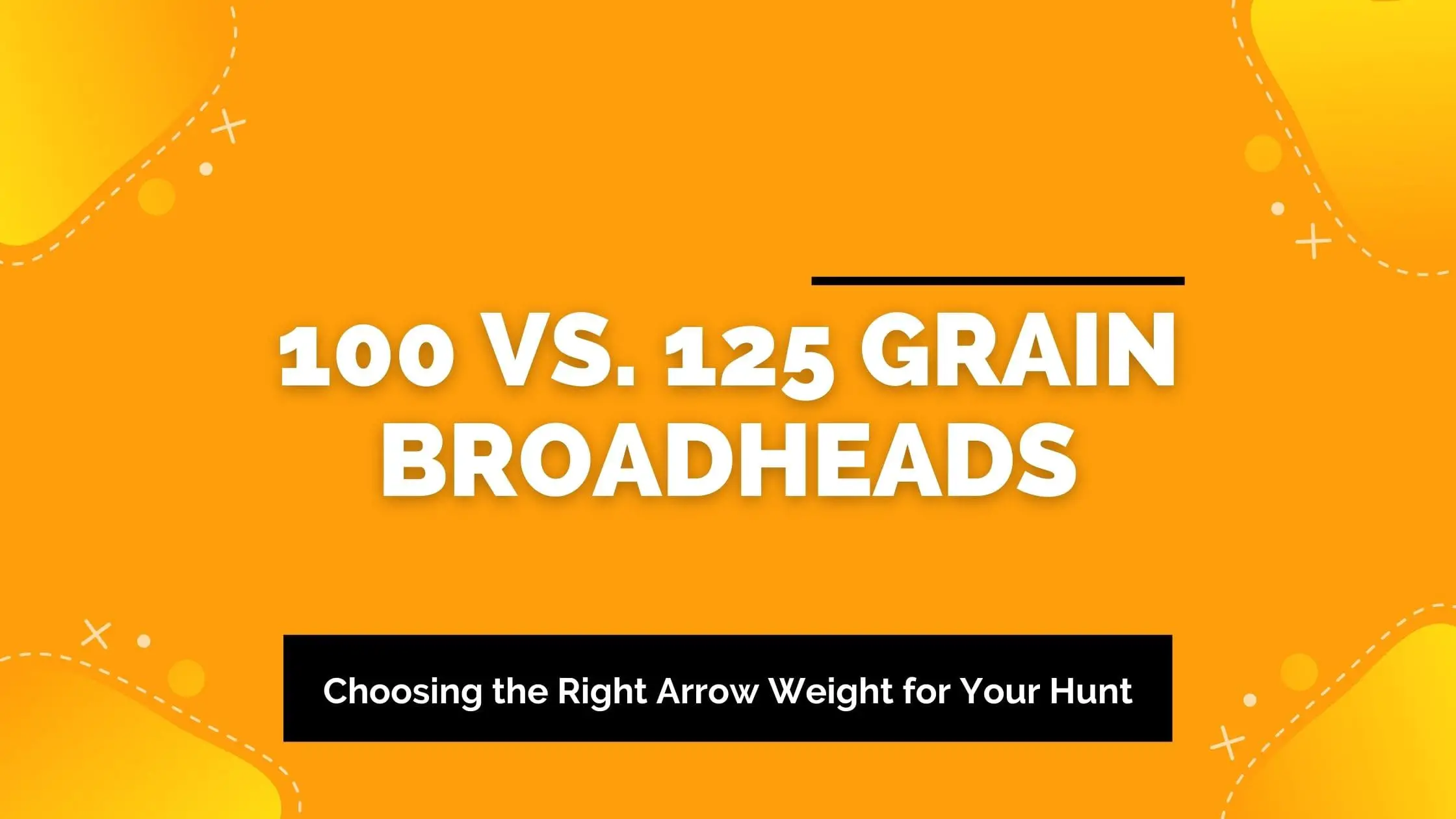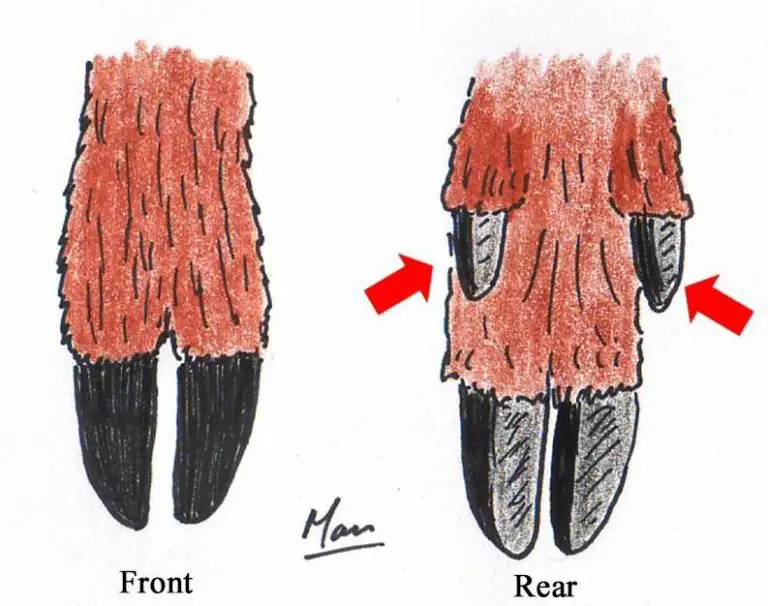100 vs. 125 Grain Broadheads: Choosing the Right Arrow Weight for Your Hunt
Broadheads are the sharp tips or points of arrows used in hunting. The weight of a broadhead is typically measured in grains, with common options being 100 grain and 125 grain.
The choice between these two weights can depend on various factors, such as the type of game being hunted, the desired arrow speed, and personal preferences.
Let’s explore the differences, reasons, and considerations for choosing between 100 grain and 125 grain broadheads.
| Aspect | 100-grain Broadheads | 125-grain Broadheads |
| Weight | 100 grains (~6.5 grams) | 125 grains (~8.1 grams) |
| Speed and Trajectory | Faster, flatter trajectory | Slightly slower, arc trajectory |
| Penetration and Energy | Less penetration, lower kinetic energy | Better penetration, higher kinetic energy |
| Suitable for | Smaller game, long-distance accuracy | Larger game, pass-through shots |
| Considerations | Bow setup, target size | Bow setup, target size |
Differences Between 100 Grain Vs 125 Grain Broadheads
The main difference between 100 grain and 125 grain broadheads is their weight. A 125 grain broadhead weighs 25 grains more than a 100 grain broadhead. This weight difference can have several implications for arrow performance and hunting effectiveness.
Arrow Speed:
Generally, a lighter broadhead, such as a 100 grain, can result in a faster arrow speed compared to a heavier broadhead like a 125 grain.
The increased weight of a 125 grain broadhead can slightly reduce the arrow’s velocity.
Kinetic Energy:
The weight of the broadhead affects the kinetic energy (KE) delivered by the arrow upon impact.
A heavier broadhead, like a 125 grain, can potentially deliver more kinetic energy to the target compared to a lighter 100 grain broadhead.
This increased energy can be advantageous when hunting larger game or when shooting at longer distances.
Front-of-Center (FOC) Balance:
The weight distribution of an arrow plays a role in its stability and accuracy.
A heavier broadhead, such as a 125 grain, can shift the arrow’s center of mass forward, resulting in a higher Front-of-Center (FOC) balance.
This FOC balance can improve arrow stability and penetration.
Penetration:
Due to its higher weight, a 125 grain broadhead may provide slightly better penetration compared to a 100 grain broadhead.
This can be beneficial when hunting larger or tougher game.
Reasons For Choosing 100 Grain Or 125 Grain Broadheads
The choice between 100 grain and 125 grain broadheads ultimately depends on the specific hunting situation, personal preferences, and the equipment being used.
Here are some reasons why hunters might choose one weight over the other:
Game Size:
For smaller game or when hunting animals that are easier to penetrate, a 100 grain broadhead may be sufficient. However, when hunting larger game, such as elk or moose, a 125 grain broadhead may provide better penetration and stopping power.
Arrow Speed:
If maintaining a high arrow speed is a priority, a 100 grain broadhead can be a good choice. The lighter weight of a 100 grain broadhead can help maximize arrow velocity, which can be advantageous for long-range shots or when hunting fast-moving game.
Arrow Stability:
If arrow stability and accuracy are primary concerns, a heavier broadhead like a 125 grain can improve FOC balance and potentially enhance shooting consistency.
Equipment Compatibility:
It’s important to consider the compatibility of broadheads with the rest of your archery equipment. Some arrows and bow setups may be better suited for either 100 grain or 125 grain broadheads due to factors such as arrow spine and bow poundage.
When To Choose 100 Grain Or 125 Grain Broadheads
The decision between 100 grain and 125 grain broadheads depends on the specific hunting scenario and individual preferences. Here are some general considerations:
100 Grain Broadheads:
- Suitable for smaller game or animals that are easier to penetrate.
- Ideal for maintaining high arrow speeds and flatter trajectories.
- Can be advantageous for long-range shots or when hunting fast-moving game.
- May be preferred by archers who prioritize arrow speed and flat trajectory.
Best 100 Grain Broadheads
Here are three of the best 100 grain broadheads:
- Grim Reaper 1 3/8 Razor Tip: This is a mechanical broadhead known for its accuracy and effectiveness. It features a 1 3/8-inch cutting diameter and is designed for maximum damage.
- Vantage Point Archery 3-Blade: These broadheads are easy to maintain and can be sharpened quickly. They have a 1 1/8-inch cutting diameter and are known for their durability and accuracy.
- Annihilator Broadheads: These fixed-blade broadheads are described as accurate, strong, durable, and lethal. They have a 100-grain weight and come in a pack of three.
125 Grain Broadheads:
- Provide better penetration and stopping power for larger or tougher game.
- Can improve arrow stability and accuracy through higher FOC balance.
- May be preferred for hunting situations where maximum kinetic energy is desired.
- Suitable for archers who prioritize penetration, stopping power, and arrow stability.
Best 125 Grain Broadheads
Here are three of the best 125 grain broadheads:
- Tooth of the Arrow 125 grain XL broadhead: This broadhead offers a 1-3/16-inch cutting diameter, making it suitable for deer and other small to medium game. It is known for delivering a superior hunting experience.
- NAP Spitfire Mechanical Broadhead: The Spitfire Mechanical Broadhead is available in both 100 grain and 125 grain options. It features a 1 1/2-inch cutting diameter and a 3-blade design. NAP Spitfire is well-regarded as one of the original and best mechanical broadheads on the market.
- Rage Crossbow X, 2-Blade Archery Arrow Broadhead: Although it is primarily designed for crossbows, the Rage Crossbow X 2-Blade Broadhead is also suitable for compound bows. It is available in both 100 grain and 125 grain options. This broadhead features Shock Collar Technology and has gained popularity for its accuracy and penetration.
Frequently Asked Questions
What are 100-grain and 125-grain broadheads?
- 100-grain Broadheads: These are arrowheads designed to weigh 100 grains (approximately 6.5 grams). They are a common choice among archers and hunters.
- 125-grain Broadheads: These arrowheads have a weight of 125 grains (about 8.1 grams). They are slightly heavier than 100-grain broadheads.
Why might you choose 100-grain broadheads?
Speed and Flat Trajectory: 100-grain broadheads are lighter, which can result in a faster arrow speed and a flatter trajectory. This can be advantageous for longer shots and when you need to compensate for distance.
Why might you choose 125-grain broadheads?
Penetration and Kinetic Energy: The added weight of 125-grain broadheads can provide better penetration and kinetic energy upon impact. This can be beneficial for hunting larger game or when you need to punch through bone.
When to use 100-grain vs. 125-grain broadheads:
- 100-grain Broadheads: Use these when you prioritize speed and flatter trajectory. They are suitable for smaller game or when accuracy at longer distances is crucial.
- 125-grain Broadheads: Opt for these when you require better penetration and energy transfer, especially for larger game or situations where a pass-through shot is vital.
Which broadhead weight for deer?
When it comes to choosing the weight of a broadhead for deer hunting, 100 grains is the most common and widely used weight.
- 100-Grain Broadheads: These are a common choice for deer hunting. They offer good speed and trajectory, making them suitable for shots at moderate distances. They can work well with many standard bows and arrows.
- 125-Grain Broadheads: Slightly heavier broadheads, like the 125-grain ones, can provide better penetration and kinetic energy. This can be advantageous for deer hunting, especially if you anticipate shots at longer distances or want to ensure a pass-through shot.
How to decide between 100-grain and 125-grain broadheads:
- Consider Your Target: Assess the size of the game you intend to hunt. Smaller game may require 100-grain broadheads, while larger game may necessitate the additional weight of 125-grain broadheads.
- Evaluate Your Bow Setup: Your bow’s draw weight, arrow spine, and overall setup can influence which broadhead weight is more suitable. Consult with a knowledgeable archery expert for guidance.
In summary, the choice between 100-grain and 125-grain broadheads depends on your specific needs and preferences. Each has its advantages, with 100-grain broadheads offering speed and a flat trajectory, while 125-grain broadheads provide better penetration and kinetic energy.
Assess your target and bow setup to make an informed decision, and remember that personal preference can also play a role in your choice.
Conclusion
The choice between 100 grain and 125 grain broadheads depends on factors such as game size, desired arrow speed, arrow stability, and personal preferences.
While a 100 grain broadhead may offer higher arrow speed and flatter trajectory, a 125 grain broadhead can provide better penetration and stopping power for larger game.
Consider the specific hunting scenario, equipment compatibility, and your own shooting style when making a decision.
Ultimately, both 100 grain and 125 grain broadheads can be effective choices, and it’s important to practice and test different broadheads to find the best fit for your needs.







